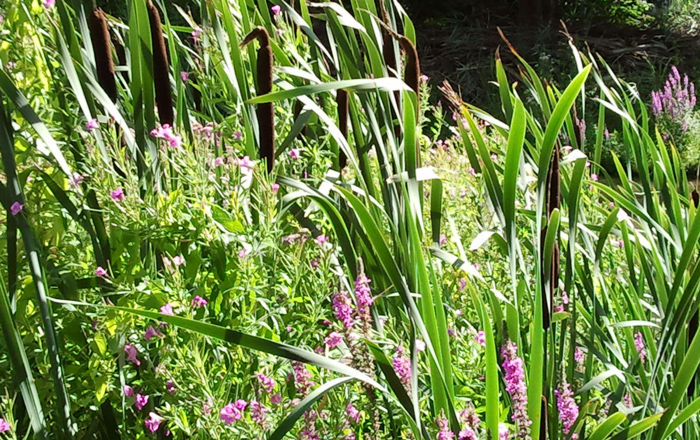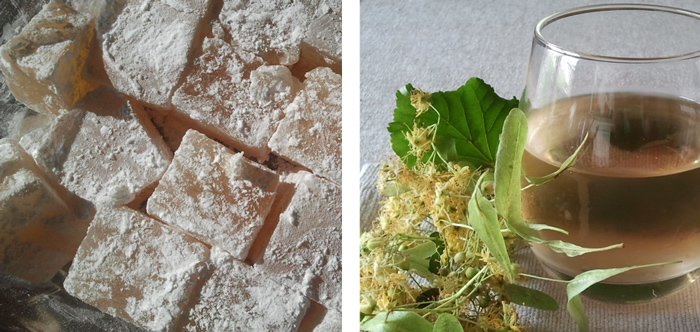Keeping City Herbs in Sight
 After moving to Amsterdam from the English countryside, I felt rather disconnected from nature. While trying to reconnect with the land, less obvious city plants and spaces began to catch my eye. As they did, the world of urban foraging opened up to me. Seven years on, I seek out wild food and medicine each day from city parks, streets, canal sides, and tree canopies. It is a challenge to walk anywhere now without spotting useful plants. Urban foraging offers me a sense of belonging; a relationship to nature and like-minded city folk.
After moving to Amsterdam from the English countryside, I felt rather disconnected from nature. While trying to reconnect with the land, less obvious city plants and spaces began to catch my eye. As they did, the world of urban foraging opened up to me. Seven years on, I seek out wild food and medicine each day from city parks, streets, canal sides, and tree canopies. It is a challenge to walk anywhere now without spotting useful plants. Urban foraging offers me a sense of belonging; a relationship to nature and like-minded city folk.
Of course, it is essential that foragers everywhere know what is safe to eat, where they are allowed to harvest, and what to do with their bounty. Most of us learn how to identify a few edibles in childhood, such as blackberries and apples. Some of us even learn from our family and friends how to find and use a few medicinal plants. Unfortunately, much of that knowledge has been lost, but many of us are trying to reverse the tide. We relearn, update, and teach herbal traditions to the people around us. There are plenty of books, apps, and courses for those seeking knowledge of wild food and medicine, but there is no substitute for spending time with the plants and with individuals who are experienced in finding and using them safely.
Urban Herbology (UH) is the social network I established in 2010 to help increase knowledge of city herbs. Towns and cities are often rich ecological environments. Some plant species, which do not fare well in the modern countryside, are able to thrive there. By helping city folk learn how to identify, nurture, and use some of these plants, we can help increase the beauty and health of our environment. Quite small quantities of herbs are all that is generally required to enhance a diet or ease minor ailments. Just one leaf from garlic mustard (Alliaria petiolata) can flavour a meal, and three magnolia petals can infuse soothing qualities into a small jar of honey. Harvesting in this way leaves plenty for other foragers and for all the other elements of nature, and it may nudge us to learn more about our own health.

The UH network offers urban herb walks, workshops, and gatherings. Open to everyone, it aims to share knowledge and to encourage appropriate, safe, and confident use of city herbs. Events teach skills that can help reduce food, plant, and medicine costs. Some meetings teach individuals how to propagate native herbs such as elderberry (Sambucus nigra), to help increase their availability to foragers. Herbal remedies from prolific urban herbs such as plantain (Plantago major) and Russian comfrey (Symphytum x uplandicum) are the subject of other workshops. Each meeting unearths distinct remedies used by families and friends and it is always fascinating to evaluate these recipes in light of the lifestyles we now share.
River of Herbs is our latest project. It is inspired by the London-based initiative River of Flowers. The aim is to help city residents plant, maintain, and make use of herbs in unused spaces, however large or small. The spaces are called Urban Herb Meadows and, as they develop, will house insect-pollinated culinary and medicinal herbs, providing year-round nectar, beauty, and usefulness to residents. As momentum gathers, we have begun teaching how to save and sow seed from suitable city herbs.
There are thousands of ways to use just a little of the herbal wealth that graces our cities. Magnolia petal honey, ground ivy tea, mugwort bread, elderflower delight, hollyhock syrup, and ground elder garnish are just a few of them. It’s unlikely that urban foraging will cut your grocery bill in half, but it may help you reconnect with nature and your local community.
Photo credits: Lynn Shore

